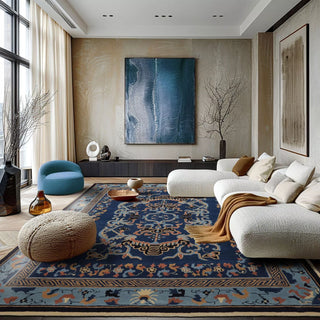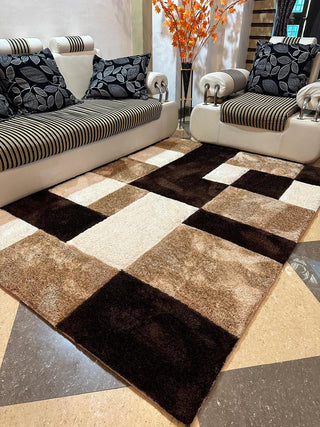A well-chosen Indian carpet can transform a room in seconds, adding warmth, style, and comfort while protecting floors and reducing noise. If you’re exploring an Indian carpet for your living room, bedroom, corridor, or pooja space, this guide simplifies choices across hand tufted, shaggy, hand knotted, jute, Irani, and modern abstract designs. You’ll learn how to pick the right size, material, and construction, plus easy Indian climate care tips and a room-by-room checklist to shop with confidence from Carpet Planet online or in-store.
Why an Indian carpet elevates your home
Carpets are more than décor; they soften footsteps, reduce echo, and add insulation against heat and cold. An Indian carpet brings artisan texture, rich color, and patterns that pair beautifully with Indian furniture and finishes. With the right construction and pile height, you balance comfort, durability, and easy maintenance for busy households.
How to choose construction: hand tufted, shaggy, hand knotted
-
Hand tufted: Yarn is inserted into a base cloth and finished with latex backing. Offers premium looks, broad styles, and strong value—great for living, dining, and bedrooms.
-
Shaggy: Longer, plush fibers for cloud‑soft comfort; ideal for bedrooms and lounge corners where coziness matters.
-
Hand knotted: Woven knot by knot by artisans; higher price but heirloom quality, exceptional detail, and decades of life.
Material guide for Indian homes
-
Wool: Naturally resilient, soft, and stain-resistant; top pick for family spaces.
-
Polyester/microfiber blends: Vibrant color, soft touch, easy care—perfect for bedrooms and media rooms.
-
Jute: Organic, eco-friendly texture; best in dry indoor areas.
Ask about fiber composition, pile height, density, and backing to match foot traffic, climate, and cleaning comfort.
Design categories and when to use them
-
Modern Abstract: Adds movement and depth to minimalist rooms.
-
Geometric: Clean lines for contemporary/Scandi themes.
-
Floral: Softens classic wood tones and traditional décor.
-
Traditional: Timeless motifs that complement Indian furniture.
-
Modern Persian: Classic patterns, updated palettes; refined and upscale.
-
Solid: Quiet, versatile base to let art and furnishings pop.
-
Abstract: Dynamic statements for open layouts.
Specialty shapes and formats
-
Round tufted/shaggy: Under round tables, reading corners, or to soften boxy rooms.
-
Irregular shapes: Add personality around bay windows and creative zones.
-
Runners (tufted/shaggy): Define hallways, lower echo, and protect floors.
-
Anime: Energize kids’ rooms with soft play zones.
-
Janamaz rugs: Comfortable, portable, easy to store for daily prayers.
Room-by-room sizing rules
-
Living room: Large enough for front legs of sofas/chairs on the rug to unify seating.
-
Dining: Extend at least 60 cm beyond table edges for smooth chair movement.
-
Bedroom: 60–90 cm overhang beyond bed sides for hotel‑like comfort.
-
Hallways: Leave 10–15 cm from walls for a tailored look.
-
Compact rooms: Round rugs soften corners and create a calm focal point.
Always measure, tape the outline on the floor, and confirm door clearance before buying.
Pile height and density explained
-
Low pile: Easier to clean; best for dining and hallways.
-
Medium pile: Balanced comfort and care; great for living rooms.
-
High pile (shaggy): Maximum plush; needs mindful maintenance.
-
Density: More tufts per area improves durability and crush resistance.
Backing, edges, and build quality
-
Backing: Stabilizes shape and improves longevity (latex standard in hand tufted).
-
Edges/binding: Prevent fraying—critical for runners and doorways.
-
Hand knotted: Check knot density and evenness for pattern clarity and lifespan.
Color strategy that works in India
-
Neutral solids or tonal geometrics create a calm base for colorful cushions and art.
-
Modern abstract in earthy/pastel tones pairs with light walls and contemporary furniture.
-
Traditional/modern Persian in rusts, blues, and sages add classic warmth without heaviness.
Care for Indian climate
-
Vacuum 2–3 times weekly in high-traffic zones; blot spills immediately (never rub).
-
Rotate quarterly to balance wear and sun exposure.
-
Use a breathable rug pad to prevent slipping and improve airflow.
-
Monsoon: Increase ventilation, use fans/dehumidifier, never vacuum wet fibers; ensure complete drying.
-
Pro cleaning: Wool and hand knotted rugs every 12–18 months.
Budgeting and value
-
Invest in statement areas (living room, master bedroom) for longevity and impact—hand tufted/hand knotted shine here.
-
For rentals/kids’ rooms, choose shaggy or abstract for visual punch at accessible prices.
-
Jute delivers natural texture and warmth on a budget.
Quick décor formulas
-
Minimal modern: Solid or geometric base + abstract cushions + warm wood.
-
Classic Indian: Traditional or modern Persian + carved wood + brass accents.
-
Contemporary chic: Modern abstract + neutral sofa + textured throws + plants.
-
Cozy retreat: Shaggy + layered knits + warm lighting.
Category spotlight: styles you’ll love
-
Hand Tufted: Design-forward, reliable, strong value, quick availability.
-
Shaggy: Ultra-plush comfort; bedroom/media favorite.
-
Hand Knotted: Heritage luxury and long lifespan; statement pieces.
-
Jute: Eco texture for dry spaces; pairs with plants and natural wood.
-
Irani / Round Irani: Refined motifs in rectangle or circular formats.
-
Modern Abstract / Traditional / Modern Persian / Solid / Geometric / Floral / Abstract: Choose to set tone and balance patterns.
Use cases
-
Living room anchor: Hand tufted or modern Persian large enough to sit beneath front legs of seating.
-
Bedroom comfort: Shaggy with 60–90 cm overhang for hotel‑feel steps.
-
Dining practicality: Low/medium pile hand tufted sized beyond chair clearance.
-
Hallway definition: Runner tufted to guide the eye and reduce echo.
-
Kids’ creativity: Anime or irregular shapes for playful, safe flooring.
-
Prayer space: Janamaz rugs with soft padding and easy roll-away storage.
-
Statement corners: Round tufted or round Irani under an accent chair and lamp.
Buying checklist
-
Measure twice; tape the outline to verify scale and door clearance.
-
Check fiber content, pile height, density, backing, and edge finishing.
-
Review care instructions, return policy, and warranty.
-
Add a quality rug pad for safety, comfort, airflow, and longer life.
Expert maintenance tips for India
-
Weekly: Vacuum high-traffic zones 2–3 times; sweep adjacent floors to reduce dust transfer.
-
Spills: Blot immediately; mild solution; test first; dry thoroughly.
-
Monsoon: Ventilate, dehumidify, avoid vacuuming wet fibers; sun‑dry when possible.
-
Annual: Professional clean wool and hand knotted every 12–18 months.
-
Long‑term: Rotate quarterly; use curtains for UV moderation; store in breathable covers.
Internal link (shop now)
Explore hand tufted Indian carpets ready to ship across India: https://carpetplanet.in/collections/buy-hand-tufted-rugs-carpets-online
FAQ
-
What makes an Indian carpet smart for busy homes?
Comfort, durability, and versatile designs with materials/piles suited to Indian traffic and climate. -
Which carpet is best for living rooms with guests?
Wool or wool‑blend hand tufted—resilient, easy care, refined style. -
Are shaggy carpets hard to maintain?
They need height‑adjustable vacuuming and occasional fluffing; comfort is unmatched. -
Is jute suitable for Indian homes?
Yes, in dry indoor spaces; pair with a pad for extra cushioning. -
Hand knotted vs hand tufted—key difference?
Hand knotted are artisan, heirloom builds; hand tufted are faster to make with excellent value and variety. -
What size for dining tables?
Add at least 60 cm beyond table edges so chairs slide freely. -
How often to deep clean premium rugs?
Every 12–18 months for wool and hand knotted pieces. -
Do round rugs work in small rooms?
Yes—round tufted/shaggy soften corners and create a calm focal point. -
How to keep carpets fresh in monsoon?
Boost airflow, dehumidify, avoid vacuuming wet fibers, and dry completely after cleaning. -
Do I need a rug pad?
Yes—for safety, comfort, airflow, and extended rug life.
Conclusion
An Indian carpet is the fastest way to add warmth, style, and harmony to your home while improving comfort and acoustics. Match construction, material, pile height, and size to each room, and you’ll enjoy long‑lasting beauty with simple care in every season. Whether modern abstract, traditional, modern Persian, jute, Irani, or shaggy, the right Indian carpet will anchor your décor and feel great underfoot. Ready to elevate your space? Explore top collections online or visit the store for expert styling help.



